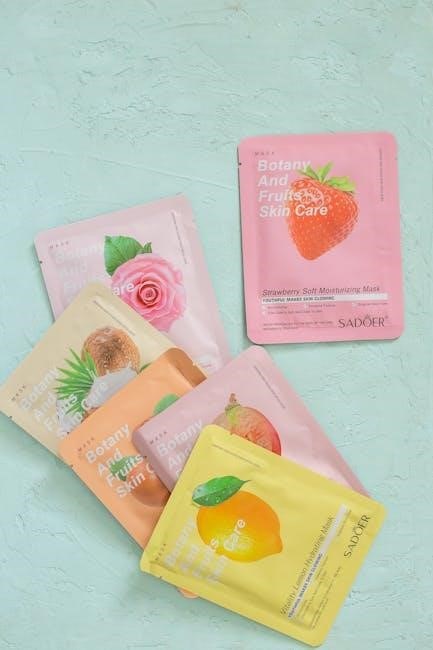La Vie en Rose, a timeless jazz standard by Édith Piaf and Louiguy, captivates with its emotional depth․ The lead sheet PDF offers the melody, chords, and lyrics, making it accessible for musicians to perform this iconic piece․
1․1․ Background of the Song
La Vie en Rose, a classic French jazz standard, was composed by Édith Piaf and Louiguy, with French lyrics by Piaf․ Premiering in 1946, it became an iconic representation of French culture, capturing the essence of love and melancholy․ The song’s emotional depth and poetic lyrics resonated globally, making it a timeless favorite․ Its lead sheet PDF is widely sought after, offering musicians the melody, chords, and lyrics to perform this cherished piece, ensuring its enduring legacy in music history․
1․2․ Composition and Structure
La Vie en Rose features a harmonic-rich composition in the key of G major, with chord progressions like G, E7, Ami7, and D7, creating a melancholic yet elegant feel․ The lead sheet PDF includes the melody, lyrics, and chord notations, allowing musicians to interpret the song’s emotional depth․ The structure follows a slow tempo, emphasizing poetic lyrics and a soaring melody․ This arrangement makes it accessible for various instruments, ensuring its timeless appeal and versatility in performances, whether vocal or instrumental․

History of “La Vie en Rose”
Composed by Édith Piaf and Louiguy, “La Vie en Rose” is a timeless French jazz standard․ The lead sheet PDF provides the melody and chords for musicians to embrace its rich history and emotional depth, ensuring its legacy endures across generations and performances․
2․1․ Original Composition by Édith Piaf and Louiguy
The original composition of “La Vie en Rose” was created by Édith Piaf and Louiguy in 1946․ The lead sheet PDF captures the essence of their collaboration, featuring the iconic melody, harmony, and French lyrics․ Piaf’s poetic words, combined with Louiguy’s timeless musical arrangement, evoke deep emotions․ The song’s structure, with its slow tempo and rich chord progressions, has become a cornerstone of French jazz․ The lead sheet serves as a valuable resource for musicians, preserving the song’s authenticity and emotional depth for generations to explore and perform․
2․2․ First Performance and Initial Reception
Édith Piaf first performed “La Vie en Rose” in 1946, captivating audiences with its emotional depth․ The song’s poetic lyrics and melancholic melody resonated deeply, making it an instant hit․ The lead sheet PDF reflects this original arrangement, preserving the essence of Piaf’s heartfelt delivery․ Its initial reception was overwhelmingly positive, solidifying its place in French jazz history and setting the stage for its enduring popularity․
2․3․ Evolution of the Song Over Time
“La Vie en Rose” has evolved from its 1946 debut, becoming a global jazz standard․ Louis Armstrong’s rendition introduced it to international audiences, while modern covers and remixes keep it relevant․ The lead sheet PDF remains a popular resource, offering adaptability for various interpretations․ This timeless piece continues to inspire musicians, ensuring its enduring legacy in music history․

Musical Structure of “La Vie en Rose”
The song is written in a minor key, featuring chord progressions like G, E7, Ami7, and D7․ Its slow tempo and melancholic melody evoke deep emotional resonance․
3․1․ Chord Progressions and Harmonies
The lead sheet for “La Vie en Rose” features a rich harmonic structure, with chord progressions like G, E7, Ami7, D7, and G dim7․ These chords create a melancholic yet elegant atmosphere, typical of French jazz․ The song’s progression moves through minor and seventh chords, adding emotional depth․ The harmony often modulates between keys, providing a sense of tension and resolution․ This structure allows for expressive interpretations, making the piece adaptable for various arrangements while maintaining its iconic emotional resonance․
3․2․ Melody and Key Signatures
“La Vie en Rose” is written in a minor key, creating a melancholic yet elegant atmosphere․ The melody is simple yet haunting, with a slow tempo that emphasizes emotional delivery․ The lead sheet PDF provides the melody line, often in the key of C minor, with occasional modulations to enhance the song’s dramatic feel․ The interplay between the melody and harmonies adds depth, making it a timeless piece for vocalists and instrumentalists to interpret and perform with expressive nuance․
3․3․ Tempo and Rhythm
The tempo of “La Vie en Rose” is slow and deliberate, typically in a 4/4 time signature, which complements its emotional depth․
The lead sheet PDF indicates a rubato style, allowing for expressive timing and phrasing․
The rhythm is straightforward yet nuanced, with occasional syncopation adding complexity․
Dynamics range from pianissimo to fortissimo, guiding musicians to evoke the song’s signature melancholic yet hopeful vibe․

Lyrics and Their Significance
La Vie en Rose’s lyrics, crafted by Édith Piaf, convey deep emotional complexity․ The lead sheet PDF includes both French and English verses, enhancing accessibility for global musicians․
4․1․ French Lyrics by Édith Piaf
Édith Piaf’s French lyrics for La Vie en Rose are deeply poetic and emotionally resonant․ The lead sheet PDF includes these original verses, allowing musicians to connect with the song’s authentic essence․ Piaf’s words paint vivid imagery of love and longing, capturing the song’s timeless charm․ The lyrics’ emotional depth is preserved in the lead sheet, making it a valuable resource for performers seeking to honor the song’s origins․ The French version remains a cornerstone of the song’s identity․
4․2․ English Lyric Adaptation by Mack David
Mack David’s English adaptation of La Vie en Rose preserves the song’s emotional essence while making it accessible to global audiences․ The lead sheet PDF includes David’s lyrics, ensuring authenticity and ease for English-speaking performers․ His version maintains the original’s poetic depth, allowing the timeless message of love and longing to resonate universally․ This adaptation has played a key role in popularizing the song beyond French-speaking regions, making it a beloved standard worldwide․
4․3․ Interpretation and Emotional Depth
La Vie en Rose is celebrated for its profound emotional resonance, capturing the essence of love, heartache, and nostalgia․ The lyrics, both in French and English, evoke a bittersweet view of life, often interpreted as a reflection on past relationships and enduring hope․ The song’s timeless appeal lies in its universal themes, which transcend language barriers․ The lead sheet PDF enhances this emotional delivery by providing precise musical notation, allowing performers to convey the song’s intimacy and depth authentically․
Lead Sheet Specifics
The lead sheet for La Vie en Rose includes the melody, chords, and lyrics, providing a clear guide for musicians․ It features arrangements for piano, guitar, and vocals, ensuring versatility․ The PDF format allows easy download and printing, making it accessible for performers to interpret the song authentically․
5․1․ What is a Lead Sheet?
A lead sheet is a simplified musical notation that includes the melody, basic harmony, and lyrics when applicable․ It provides a concise guide for performers, allowing flexibility in interpretation․ For La Vie en Rose, the lead sheet typically features the iconic melody, chord progressions, and French lyrics by Édith Piaf․ This format is ideal for pianists, guitarists, and vocalists seeking to adapt the song to their style while maintaining its emotional essence and structural integrity․
5․2․ Elements of the Lead Sheet for “La Vie en Rose”
The lead sheet for La Vie en Rose includes the melody, chord progressions, and lyrics, providing a clear framework for performance․ Key elements are the iconic G, E7, Ami7, and D7 chords, along with the song’s signature key signatures․ The sheet also outlines the tempo and rhythm, marking it as a slow melody with a waltz-like feel․ These components ensure that the emotional and musical essence of the song is preserved, offering a solid foundation for interpretation․
5․3․ How to Read and Play the Lead Sheet
Reading the lead sheet for La Vie en Rose involves interpreting the melody, chord symbols, and lyrics․ The melody is in a minor key, with chords like G, E7, Ami7, and D7․ Pianists can play the melody with one hand and chords with the other, while guitarists can strum chords and pick the melody․ Vocalists focus on phrasing and emotional delivery․ The slow tempo allows for expressive interpretation, encouraging personal style or improvisation, making each performance unique․

Downloading the Lead Sheet
The lead sheet for La Vie en Rose is available on platforms like Musicnotes and SheetMusicPlus․ Free versions provide basic melody and chords, while paid options include detailed piano scores and arrangements․ PDF formats allow easy printing and access for musicians to practice and perform this beloved jazz standard․
6․1․ Popular Platforms for Sheet Music Downloads
Popular platforms like Musicnotes, SheetMusicPlus, and MuseScore offer high-quality PDF downloads of La Vie en Rose lead sheets․ These websites provide accurate transcriptions, including melody, chords, and lyrics․ Musicnotes offers a user-friendly interface with verified arrangements, while SheetMusicPlus includes various instrumental versions․ MuseScore features both free and paid options, catering to different skill levels; These platforms ensure musicians can access reliable sheet music for practice and performance, making La Vie en Rose easily accessible worldwide․
6;2․ Free vs․ Paid Versions
Free versions of La Vie en Rose lead sheets are available on platforms like MuseScore, offering basic melodies and chords․ Paid versions on Musicnotes and SheetMusicPlus provide detailed arrangements, including full instrumentation and lyrics․ Free options are ideal for beginners, while paid versions suit professionals needing precise notation․ Both formats ensure access to this iconic song, catering to different budgets and musical requirements․
6․3․ PDF Format and Printing Tips
The La Vie en Rose lead sheet is widely available in PDF format, ensuring easy access and compatibility with most devices․ For optimal printing, set your printer to 100% scale and use high-quality settings to maintain clarity․ Ensure your printer is calibrated for music notation to preserve intricate details․ Printing on standard sheet music paper (8․5×11 inches or A4) is recommended for readability․ This format allows musicians to easily reference and perform the piece with precision and clarity․

Instruments and Arrangements
The lead sheet for La Vie en Rose is adaptable to various instruments, including piano, guitar, and vocals, offering versatile arrangements for both solo and ensemble performances․
7․1․ Piano Solo Arrangements
The piano solo arrangement of La Vie en Rose captures the song’s emotional essence with its melancholic melody and rich harmonies․ The lead sheet provides a clear structure, featuring chord progressions like G, E7, Ami7, and D7, allowing pianists to interpret the piece with depth․ Tempo markings indicate a slow, reflective pace, while dynamics guide expressive playing․ This arrangement is ideal for solo performances, offering a intimate connection to the song’s timeless beauty․
7․2․ Guitar Tabs and Chord Charts
Guitar tabs and chord charts for La Vie en Rose are widely available, offering detailed fingerings and progressions․ These resources include chords like G, E7, Ami7, and D7, essential for capturing the song’s melancholic vibe․ Tabs cater to both beginners and advanced players, while chord charts provide a quick reference for accompaniment․ PDF downloads ensure easy access, allowing guitarists to learn and perform this timeless piece with accuracy and emotional depth, staying true to its iconic melody and harmony․
7․3․ Vocal Scores and Accompaniment
Vocal scores for La Vie en Rose provide the melody and lyrics, enabling singers to interpret the song’s emotional nuances․ Accompaniment options include piano, guitar, or full-band arrangements, enhancing the song’s expressive qualities․ The lead sheet PDF often features chord progressions and tempo markings, guiding vocalists and musicians to maintain the song’s signature slow, melancholic pace․ This structure allows for rich, heartfelt performances, capturing the essence of Édith Piaf’s original emotional delivery․

Famous Covers and Interpretations
Louis Armstrong’s jazz interpretation popularized La Vie en Rose, while modern artists continue to reimagine the classic․ Lead sheets enable musicians to explore these iconic renditions․
8․1; Édith Piaf’s Original Version
Édith Piaf’s original version of La Vie en Rose is a masterpiece of French jazz, composed by Piaf and Louiguy․ The lead sheet captures the song’s essence, featuring its iconic melody, lyrics, and chord progressions․ Piaf’s emotional delivery and unique vocal style brought the track to life, making it a timeless classic․ The availability of the lead sheet in PDF format allows musicians to study and perform her authentic interpretation, preserving the song’s legacy for future generations․
8․2․ Louis Armstrong’s Jazz Interpretation
Louis Armstrong’s rendition of La Vie en Rose brings a unique jazz flavor, blending his gravelly vocals with soulful trumpet solos․ The lead sheet PDF captures his arrangement, showcasing the melody, chords, and lyrics adapted to his style․ Armstrong’s interpretation adds a distinct American jazz vibe while respecting the song’s French origins․ His version remains a celebrated adaptation, offering musicians a fresh perspective through the lead sheet’s detailed notation, perfect for both study and performance․
8․3․ Modern Covers and Remixes
Modern covers and remixes of La Vie en Rose breathe fresh life into the classic․ Artists like Lady Gaga and Daniela Andrade offer contemporary interpretations, blending pop and electronic elements while preserving the song’s emotional core․ These versions often use the lead sheet PDF as a foundation, adapting chords and melodies to fit new styles․ Remixes emphasize rhythmic experimentation, showcasing the song’s timeless versatility․ The lead sheet remains essential, providing a roadmap for modern musicians to reinterpret this beloved standard in innovative ways, ensuring its enduring relevance across generations․

Cultural and Historical Significance
La Vie en Rose is a cultural icon, embodying French identity and resilience․ Its timeless appeal has inspired countless adaptations, solidifying its place in global music history and cinema․
9․1․ The Song’s Role in French Culture
La Vie en Rose is a beloved anthem in French culture, symbolizing resilience and romanticism․ Written by Édith Piaf and Louiguy, it embodies the essence of French identity․ The song’s emotional depth resonates deeply, making it a timeless classic․ Its influence extends beyond music, featuring prominently in films and inspiring countless artists․ As a cultural icon, it continues to evoke nostalgia and pride, cementing its legacy as a cornerstone of French musical heritage․ Its enduring appeal reflects the nation’s rich artistic history․
9․2․ Impact on Jazz and Popular Music
La Vie en Rose has profoundly influenced jazz and popular music, becoming a timeless standard․ Its emotional delivery and harmonic complexity inspired interpretations by artists like Louis Armstrong, blending French café music with jazz․ The song’s versatility has led to numerous covers, from classical arrangements to modern remixes․ It continues to inspire musicians globally, showcasing its enduring appeal and adaptability across genres․ Its influence remains a testament to its universal emotional resonance and musical richness․
9․3․ Use in Film and Media
La Vie en Rose has been prominently featured in various films and media, enhancing emotional depth in storytelling․ Notable appearances include the biographical film La Vie en Rose (2007), starring Marion Cotillard, and Woody Allen’s Midnight in Paris (2011)․ The song’s timeless appeal makes it a popular choice for soundtracks, commercials, and documentaries, evoking a sense of nostalgia and romance․ Its presence in media continues to introduce the song to new audiences, ensuring its cultural relevance and enduring legacy․

Learning and Performance Tips
The La Vie en Rose lead sheet provides the melody, chords, and lyrics, enabling singers and instrumentalists to practice and perform effectively․ Focus on emotional expression and authenticity to capture the song’s essence․
10․1․ Vocal Techniques for Singing “La Vie en Rose”
Singing La Vie en Rose requires expressive phrasing and emotional depth․ Use the lead sheet to study the melody and lyrics, ensuring precise diction․ Focus on controlling dynamics, with soft moments building to powerful crescendos․ Emphasize vibrato for emotional impact, especially in the chorus․ Practice breath control to sustain long phrases smoothly․ Pay attention to French pronunciation if performing the original version․ Rehearse with a metronome to maintain the slow, waltz-like tempo․ Capture the song’s nostalgic essence by connecting deeply with its lyrical meaning․
10․2․ Instrumental Tips for Musicians
When playing La Vie en Rose, focus on the lead sheet’s chord progressions and melody․ Pianists should use arpeggios and nuanced chord voicings to create a lush, jazzy sound․ Guitarists can employ fingerpicking patterns with chord charts for intimacy․ Maintain the slow, waltz-like tempo to preserve the song’s nostalgic feel․ Pay attention to dynamics, swelling during crescendos and softening in quieter moments․ Use vibrato and expression to enhance emotional depth, especially in instrumental solos․ Practice with a metronome to ensure timing accuracy and cohesive performance․
10․3․ Stage Presence and Emotional Delivery
Delivering La Vie en Rose requires a deep emotional connection to its nostalgic and melancholic essence․ Performers should convey vulnerability and passion through expressive facial expressions and body language․ Engage the audience by maintaining eye contact and projecting confidence․ Emphasize the song’s emotional peaks with subtle gestures and pauses․ Allow the lyrics to guide your delivery, ensuring each word resonates with authenticity․ Practice interpreting the melody with heartfelt phrasing to create a lasting impression, making the audience feel the song’s timeless beauty and sorrow․

Resources and References
Download La Vie en Rose lead sheets from platforms like Musicnotes or SheetMusicPlus․ These sites offer free and paid versions, ensuring access to high-quality sheet music for musicians․
11․1․ Recommended Sheet Music Websites
For high-quality La Vie en Rose lead sheets, visit Musicnotes or SheetMusicPlus․ These platforms offer both free and paid versions, ensuring accessibility for all musicians․ Musescore and PDFMiner also provide downloadable PDFs, ideal for printing․ Each site offers a user-friendly interface, making it easy to find and download the sheet music․ These resources are trusted by professionals and hobbyists alike, guaranteeing accurate and reliable arrangements of this timeless classic․
11․2․ Tutorials and Learning Guides
Mastering La Vie en Rose is made easier with tutorials from YouTube and Skillshare․ These platforms offer step-by-step guides for vocalists and instrumentalists․ Websites like Musescore provide interactive tools to practice the melody and chords․ Beginner-friendly lessons on Udemy break down the song’s structure, while advanced players can explore jazz improvisation techniques․ These resources cater to all skill levels, ensuring a comprehensive learning experience for those eager to perform this iconic piece effectively․
11․3․ Books and Articles About the Song
Books and articles about La Vie en Rose offer deep insights into its history and significance․ Titles like Édith Piaf: A Biography explore the song’s creation and emotional depth․ Academic articles in music journals analyze its cultural impact and harmonic structure․ Websites like JSTOR and Google Scholar provide access to these resources․ Additionally, sheet music companions and analyses are available online, offering a comprehensive understanding of this iconic piece for both scholars and musicians․
